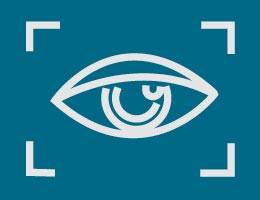
June 12, 2021—More than half of all Americans 80 or older either have a cataract or have had one removed, according to the National Eye Institute (NEI). But as common as they are, how much do you really know about cataracts? Check out these nine facts from the NEI and other eye experts:
1. A cataract is a cloudy area that develops in the lens inside the eye. The lens is a clear part of the eye that helps focus light. If it gets cloudy, it can blur your vision—a bit like looking through a dusty windshield.
2. Most cataracts are related to aging. As you grow older, protein in the lens starts clumping together. Over time, these clumps may grow large enough to harm your sight.
3. Blurry vision isn't the only sign. Cataracts can also:
- Make colors fade.
- Cause glare or a halo effect around bright lights.
- Trigger double vision or poor night vision.
- Cause frequent prescription changes in your glasses or contacts.
4. Shades can help spare your eyes. Protecting your eyes from sunlight may help delay cataracts. Look for glasses that block the sun's ultraviolet rays.
5. Healthy habits make a difference. Smoking is linked to a higher risk of cataracts. On the other hand, a diet rich in fruits and vegetables (especially leafy green veggies) and other foods with antioxidants may help lower the risk.
6. An eye injury can trigger a cataract. This is called a traumatic cataract, and it can show up years after the injury. Secondary cataracts might develop after surgery. People with diabetes, glaucoma or other health conditions that affect the eyes may also develop a cataract.
7. They're easy to diagnose. Eye doctors can usually spot cataracts in minutes. After dilating your eyes, your doctor will use a bright light to examine your lenses for any signs of clouding. According to the NEI, you should have a dilated eye exam at least every year or two if you are 60 or older.
8. Surgery is highly effective. To treat a cataract, doctors remove the cloudy lens and replace it with an artificial one. About 90% of people who have the surgery see better afterward. Cataract surgery is also one of the safest surgeries doctors do.
9. Cataracts don't have to be removed right away. Many people get by for years before opting for surgery. In the meantime, a new prescription for glasses or contacts might help you see better. You can also try brighter lighting, anti-glare sunglasses or a magnifying glass. Cataracts need to be removed when steps like these don't help and your vision loss makes it hard to drive, read or do other activities.
If you think you may have a cataract, be sure to see your eye doctor for an exam.